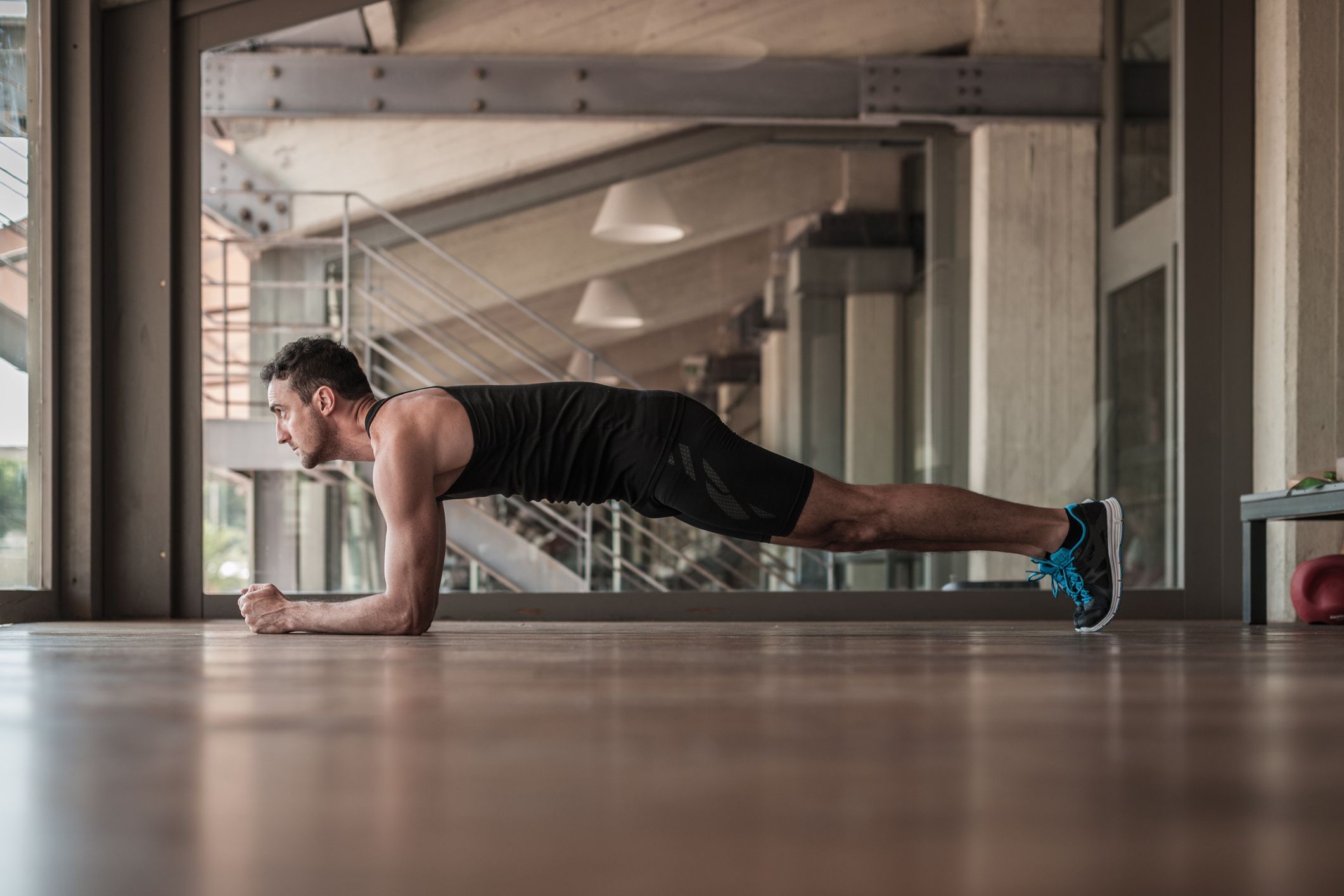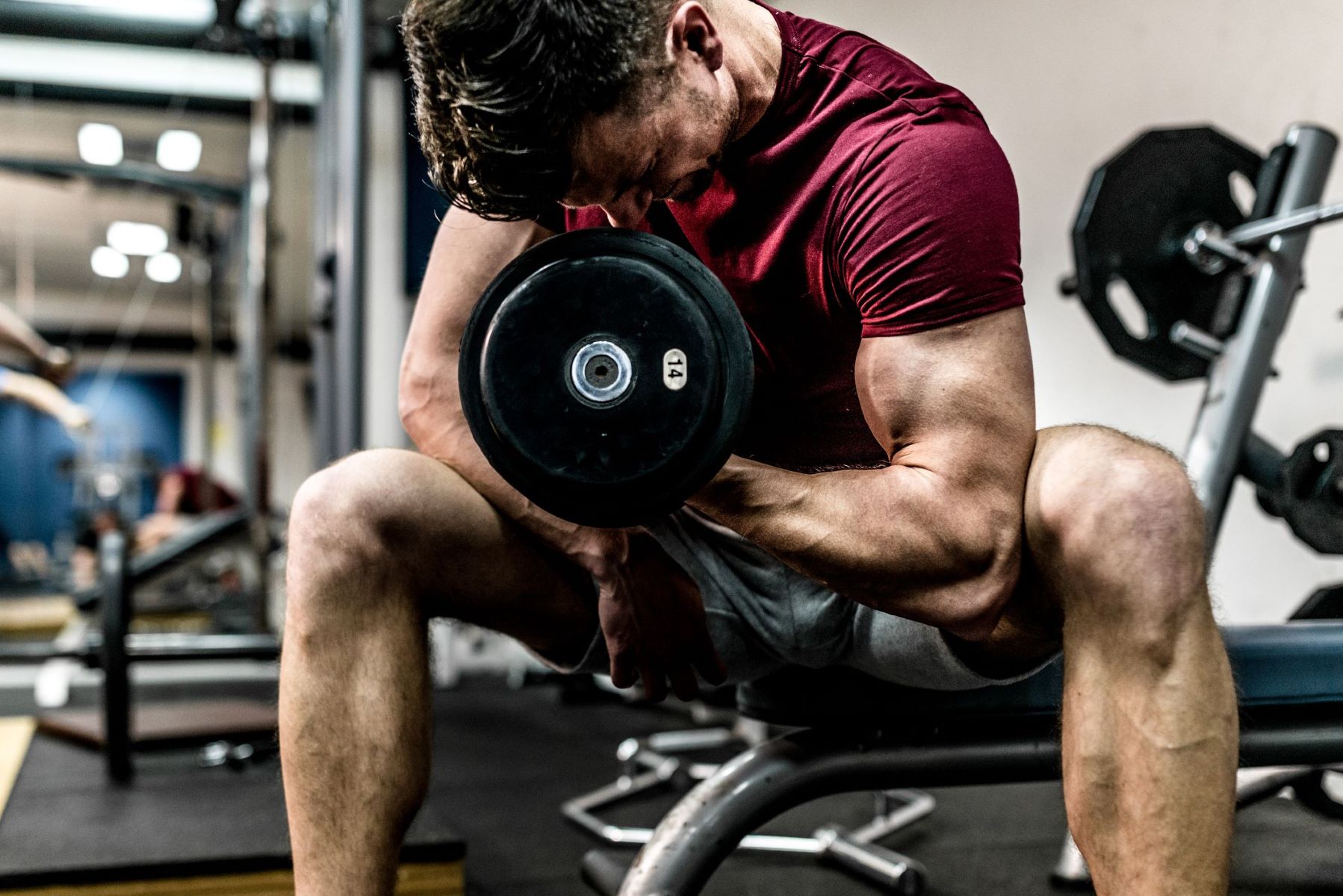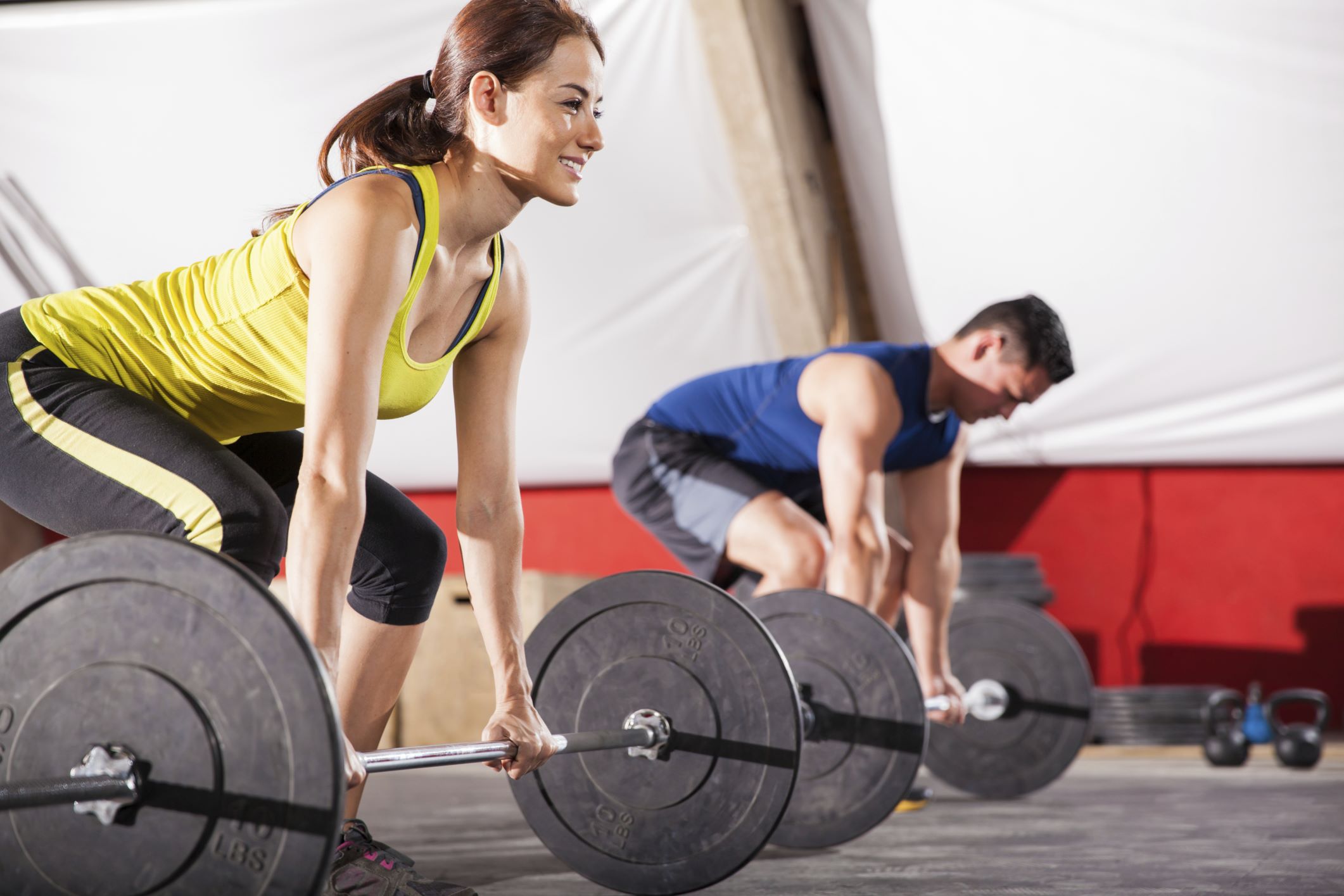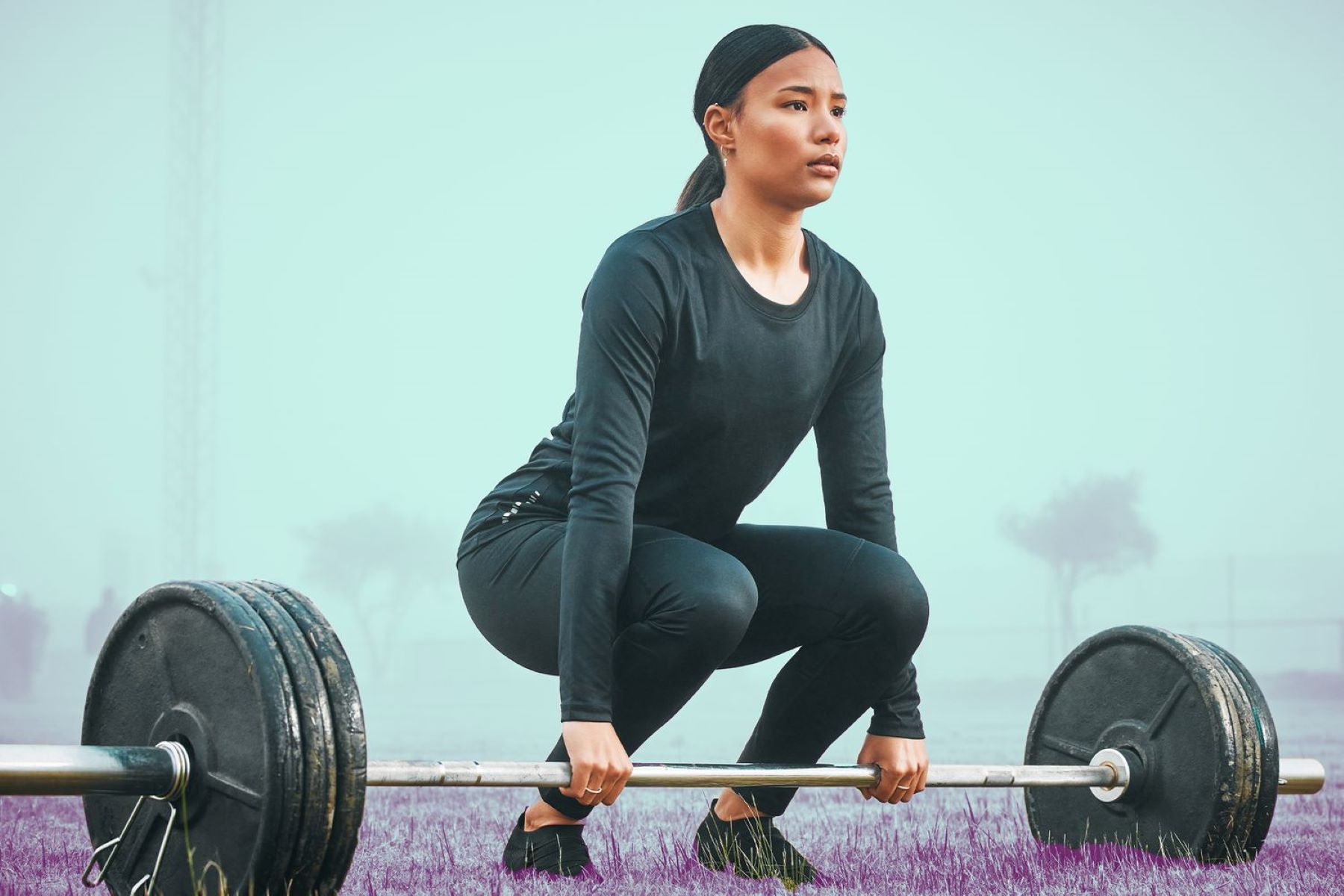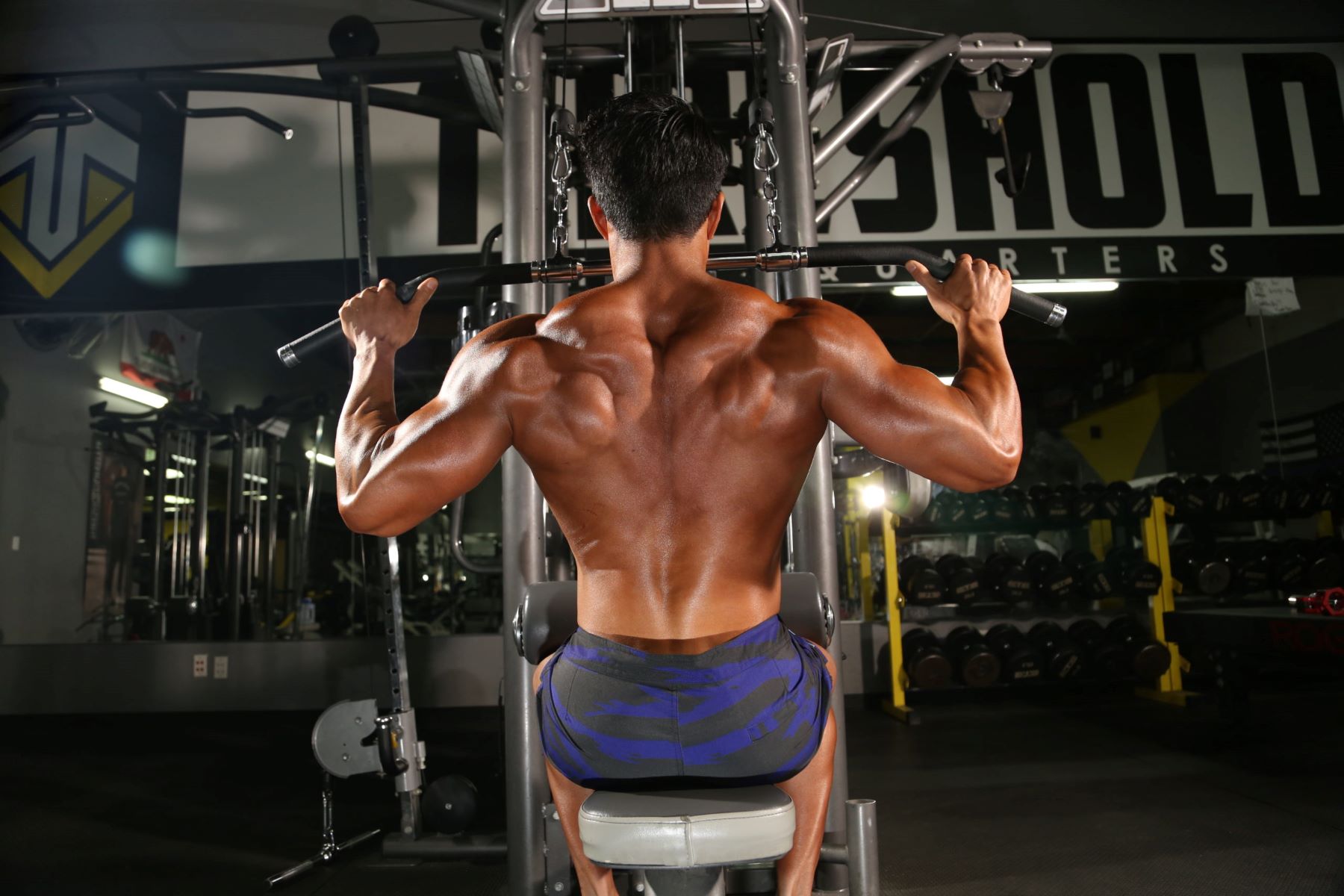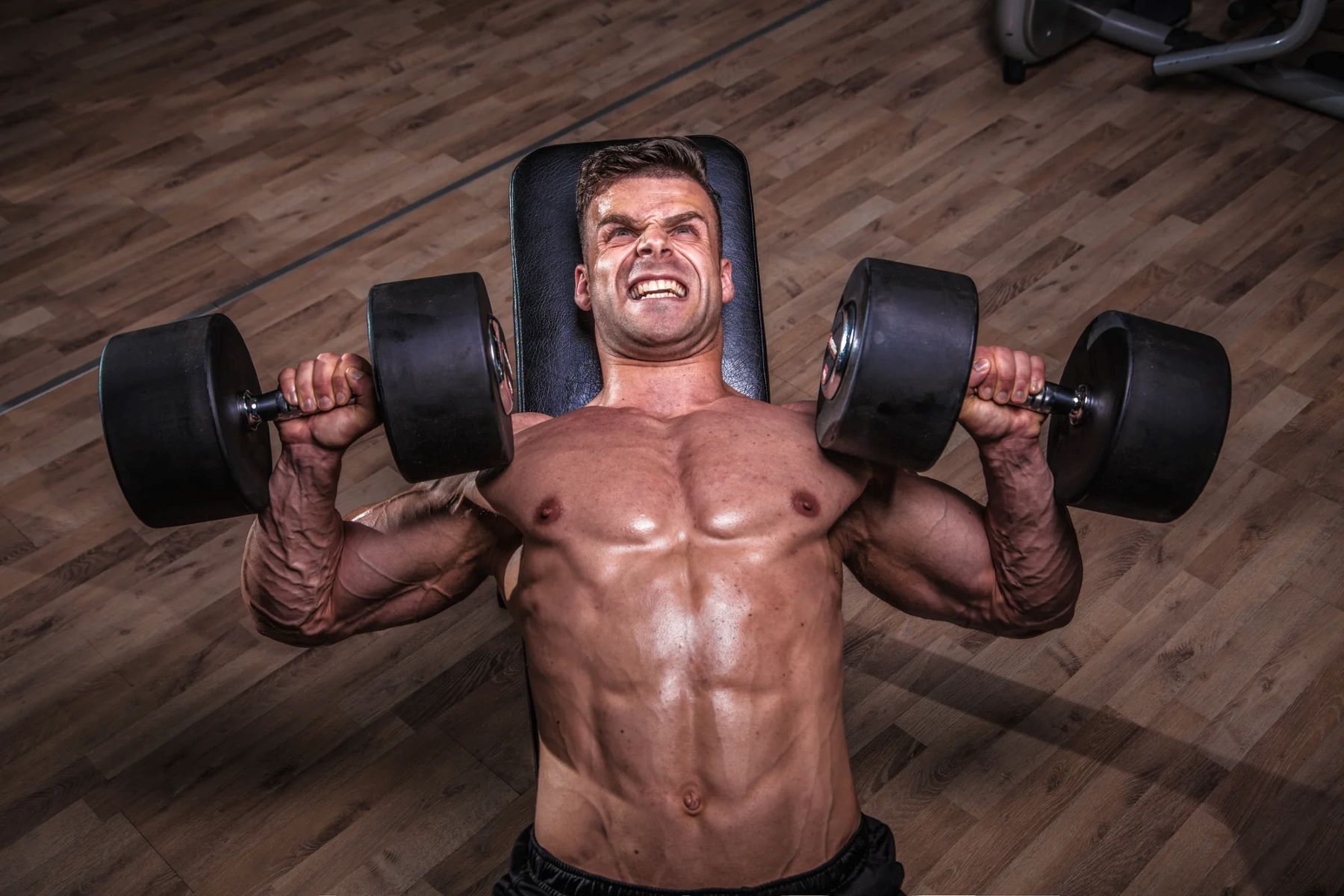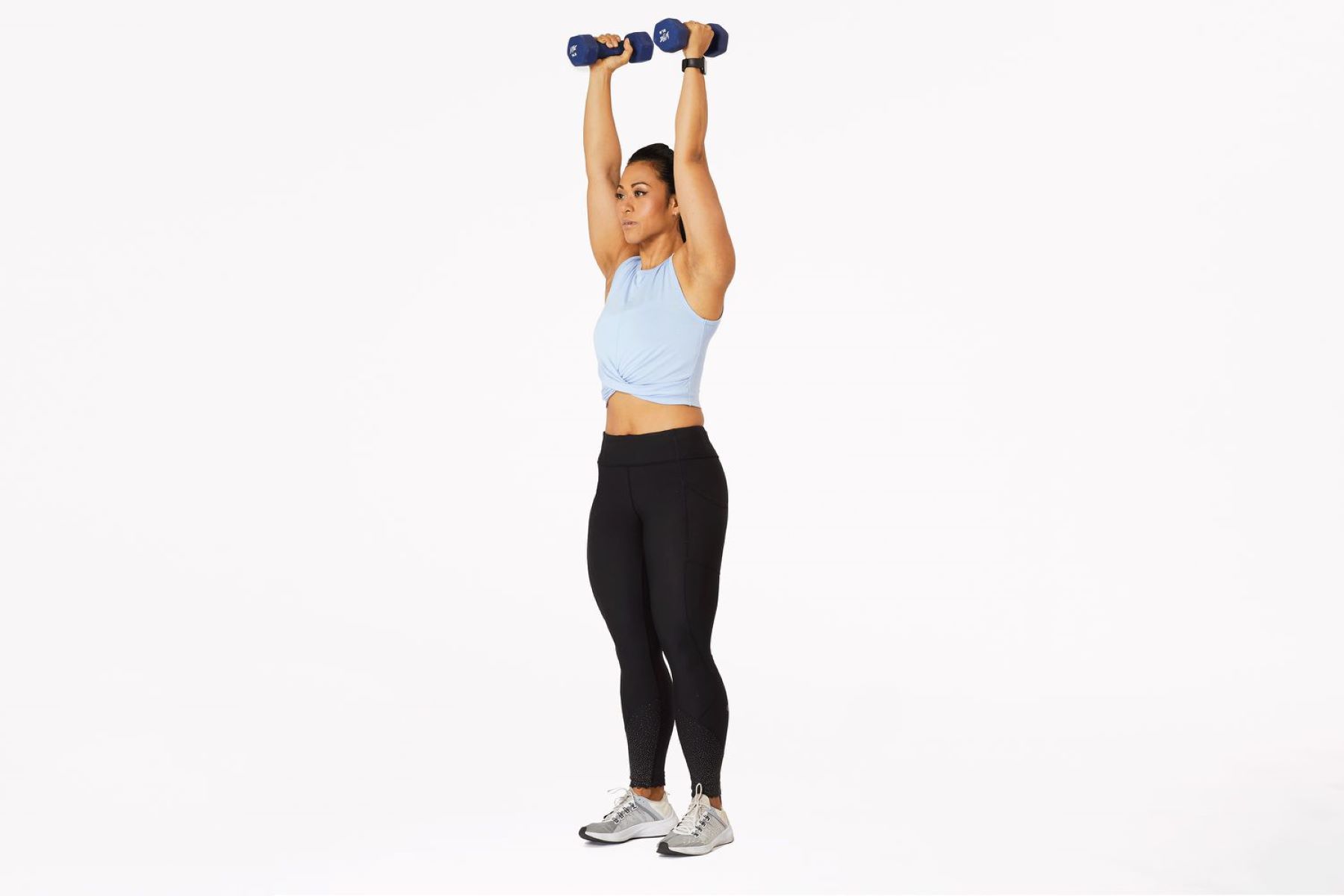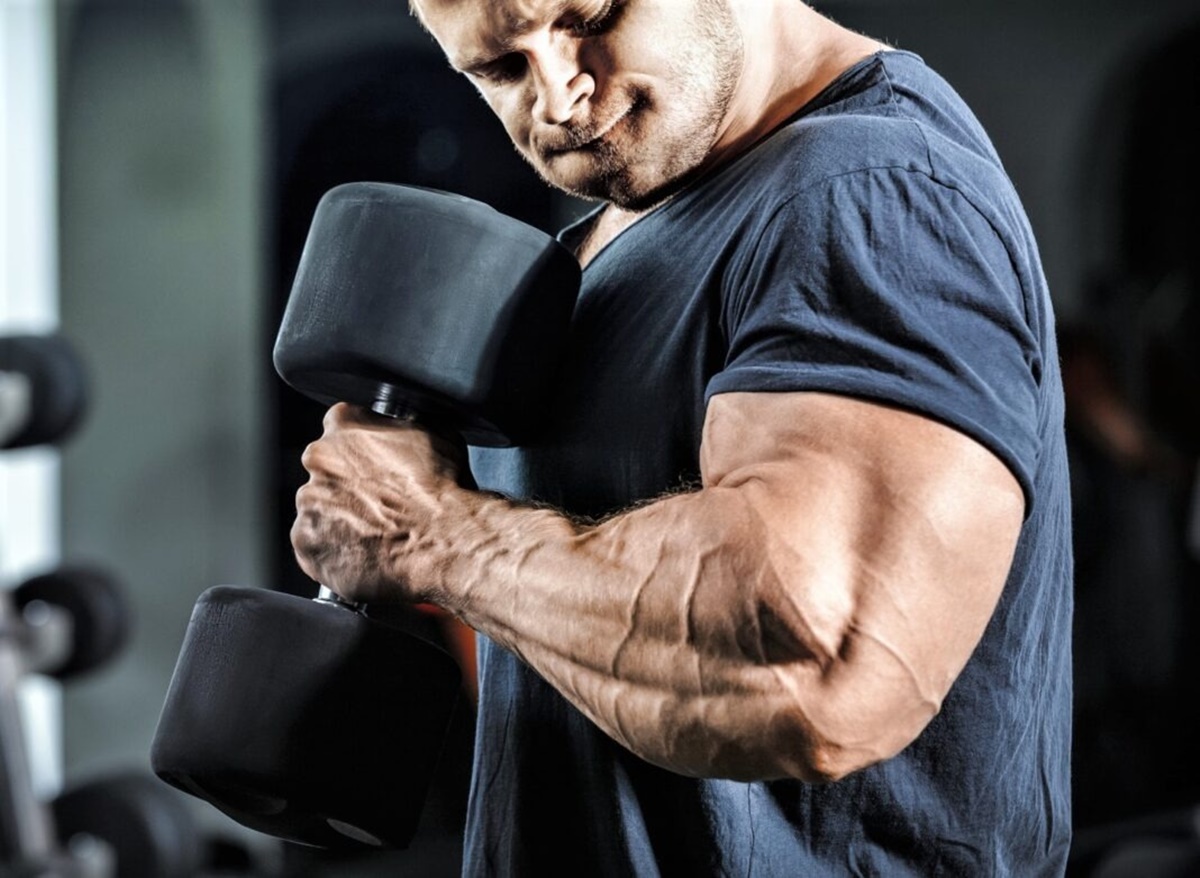

Featured
What Exercise Works On Forearms
Published: October 1, 2023
Looking to build stronger forearms? Discover the featured exercise that targets and tones your forearms effectively.
Introduction
The forearms are an often overlooked muscle group, yet they play a crucial role in many everyday activities and sports. Whether you’re lifting weights, carrying heavy objects, or performing various gripping movements, strong and well-developed forearms are essential. They not only enhance your overall strength and performance but also contribute to a balanced physique.
When it comes to forearm training, many people focus solely on bigger muscle groups like the biceps and triceps, neglecting the importance of specifically targeting the forearms. However, incorporating forearm exercises into your workout routine can offer significant benefits and help you achieve better overall strength and endurance.
In this article, we will explore the importance of forearm exercise and discuss some of the best exercises to target this muscle group effectively. By incorporating these exercises into your workout routine, you can develop stronger and more resilient forearms, improve your grip strength, and prevent potential injuries.
Whether you’re a weightlifter, athlete, or simply someone looking to enhance your overall fitness level, understanding the importance of forearm exercises and how to incorporate them into your workout routine is crucial. So, let’s dive in and explore the world of forearm training!
Importance of Forearm Exercise
While many people focus on building larger muscle groups like the chest, back, and legs, neglecting the forearms can lead to imbalances and limitations in overall strength and performance. Here are some key reasons why forearm exercise should be an important part of your fitness routine:
1. Improved Grip Strength: The forearms play a vital role in grip strength. Strong forearms allow you to have a better grip, whether you’re lifting weights, performing pull-ups, or carrying heavy objects. By incorporating specific forearm exercises, you can strengthen the muscles responsible for grip, leading to improved performance in various activities.
2. Injury Prevention: Weak forearms can increase the risk of injuries, especially when performing activities that involve repetitive gripping motions or heavy lifting. By strengthening the forearms, you enhance the support and stability of your wrists and hands, reducing the chances of common injuries like wrist strains or sprains.
3. Enhanced Performance in Sports and Activities: Many sports and activities require strong forearms for optimal performance. Sports like rock climbing, tennis, golf, and martial arts heavily rely on grip strength and forearm endurance. By incorporating forearm exercises into your training, you can gain an edge in these activities and improve your overall athletic performance.
4. Balanced Physique: Strong and well-developed forearms not only contribute to functional strength but also enhance the overall aesthetics of your physique. Having proportionate forearms creates a balanced look, complementing the muscles in the upper arms and creating a visually appealing physique.
5. Everyday Functionality: Strong forearms are not only beneficial for athletes but also for everyday activities. From carrying groceries to lifting objects at work or performing household chores, having strong forearms can make these tasks easier and less taxing on your body.
Now that we understand the importance of forearm exercise let’s dive into some of the best exercises to target the forearms effectively.
Best Forearm Exercises
Targeting the forearm muscles requires specific exercises that engage the muscles responsible for wrist and grip strength. Here are some of the best forearm exercises to incorporate into your workout routine:
1. Wrist Curls: This classic exercise targets the flexor muscles in the forearm. Start by sitting on a bench with your forearms resting on your thighs, palms facing up. Hold a dumbbell in each hand with an underhand grip. Slowly lower the weight towards the fingertips, then curl it back up by flexing your wrists. Aim for 3 sets of 12-15 repetitions.
2. Reverse Wrist Curls: This exercise targets the extensor muscles in the forearms. Similar to wrist curls, sit on a bench with your forearms resting on your thighs, palms facing down. Hold a dumbbell in each hand with an overhand grip. Lower the weight towards the fingertips, then curl it back up by extending your wrists. Perform 3 sets of 12-15 repetitions.
3. Farmer’s Walk: This exercise not only targets the forearms but also works the entire upper body. Hold a heavy dumbbell or kettlebell in each hand and walk for a designated distance or time. Focus on maintaining a tight grip throughout the exercise to maximize forearm engagement. Start with shorter distances and gradually increase as you build strength.
4. Hammer Curls: Hammer curls primarily target the brachialis muscle, but they also engage the forearms. Stand with a dumbbell in each hand, palms facing your torso. Keep your elbows close to your sides and curl the weights up towards your shoulders, maintaining a neutral grip. Lower the weights back down and repeat for 3 sets of 10-12 repetitions.
5. Towel Pull-Ups: This exercise is an excellent way to challenge grip strength while targeting the forearms. Place a small towel over a pull-up bar, grasp the towel with an overhand grip, and perform pull-ups. The additional instability of the towel requires increased forearm activation. Start with assisted pull-ups or use resistance bands if needed.
6. Grip Strengtheners: Using grip strengtheners or hand grippers is a convenient way to train the forearms anytime, anywhere. Squeeze the grip strengthener with moderate resistance for a few seconds, then release. Repeat for several sets throughout the day to progressively build forearm strength.
By incorporating these exercises into your routine, you’ll effectively target the forearm muscles and promote strength and development. Remember to use proper form and gradually increase the weight or resistance as your forearm strength improves.
Exercise 1: Wrist Curls
Wrist curls are a fundamental exercise for targeting the flexor muscles in the forearms. This exercise helps build strength and endurance in the muscles responsible for wrist flexion, contributing to improved grip strength and overall forearm development.
To perform wrist curls:
- Sit on a bench with your forearms resting on your thighs, palms facing up.
- Hold a dumbbell in each hand with an underhand grip, ensuring a comfortable weight that challenges your muscles without compromising form.
- Slowly lower the weight towards the fingertips, allowing your wrists to flex.
- Once your wrists are fully flexed, begin curling the weight back up by contracting the muscles in your forearms.
- Throughout the movement, maintain a controlled and deliberate pace, focusing on the contraction of the target muscles.
- Aim for 3 sets of 12-15 repetitions, resting for 60-90 seconds between each set.
It’s important to note that proper form is essential for maximizing the effectiveness and safety of wrist curls. Here are some tips to keep in mind:
- Keep your forearms flat and stationary against your thighs throughout the exercise.
- Avoid using momentum or excessive swinging to lift the weights, as this can take the focus away from the forearms and shift it to other muscle groups.
- Focus on the mind-muscle connection, consciously engaging and contracting the muscles in your forearms.
- Breathe naturally throughout the exercise, inhaling during the eccentric (lowering) phase and exhaling during the concentric (lifting) phase.
By incorporating wrist curls into your forearm workout routine, you can specifically target the flexor muscles and enhance your grip strength. Over time, consistent training and progressive overload will lead to stronger and more defined forearms.
Exercise 2: Reverse Wrist Curls
Reverse wrist curls are an effective exercise for targeting the extensor muscles in the forearms. By incorporating this exercise into your routine, you can strengthen these muscles, improve grip strength, and achieve better overall forearm development.
To perform reverse wrist curls:
- Sit on a bench with your forearms resting on your thighs, palms facing down.
- Hold a dumbbell in each hand with an overhand grip, choosing a weight that challenges your muscles without compromising form.
- Slowly lower the weight towards the fingertips, allowing your wrists to extend.
- Once your wrists are fully extended, begin curling the weight back up by contracting the extensor muscles in your forearms.
- Throughout the movement, focus on maintaining a controlled and deliberate pace, emphasizing the contraction of the target muscles.
- Perform 3 sets of 12-15 repetitions, resting for 60-90 seconds between each set.
Here are some essential tips to keep in mind while performing reverse wrist curls:
- Keep your forearms flat and stationary against your thighs throughout the exercise.
- Avoid using momentum or swinging motions to lift the weights, as this can take the focus away from the extensor muscles.
- Concentrate on the mind-muscle connection, actively engaging and contracting the extensor muscles in your forearms.
- Remember to breathe naturally throughout the exercise, inhaling during the eccentric (lowering) phase and exhaling during the concentric (lifting) phase.
By incorporating reverse wrist curls into your forearm workout routine, you can effectively target the extensor muscles and improve grip strength. As with any exercise, consistency and progressive overload are key to achieving optimal results. Over time, you’ll notice increased forearm strength and improved overall muscular development.
Exercise 3: Farmer’s Walk
The farmer’s walk is not only an excellent exercise for building overall strength and endurance but also a highly effective way to target the forearms. By incorporating this exercise into your routine, you can develop a strong grip, improve forearm strength, and enhance your athletic performance.
To perform the farmer’s walk:
- Stand tall with a dumbbell or kettlebell in each hand.
- Keep your shoulders back and down, engaging your core for stability.
- Begin walking, maintaining an upright posture and a controlled gait.
- Keep your grip tight throughout the exercise, placing emphasis on engaging the muscles in your forearms.
- Start with shorter distances or time intervals and gradually increase as your grip strength improves.
One of the great benefits of the farmer’s walk is its versatility. You can perform it with various weights, such as dumbbells, kettlebells, or even loaded carry handles. Additionally, you can add variations to the farmer’s walk, such as walking on uneven surfaces or incorporating turns, to challenge your grip and forearm muscles further.
Here are some essential tips to keep in mind while performing the farmer’s walk:
- Maintain proper form throughout the exercise, focusing on an upright posture and controlled movement.
- Squeeze the dumbbells or kettlebells tightly to engage the muscles in your forearms.
- Avoid letting your shoulders shrug or your posture collapse.
- Start with a manageable weight and gradually increase the load as your strength improves.
- Remember to breathe regularly during the exercise, inhaling through your nose and exhaling through your mouth.
By incorporating the farmer’s walk into your forearm workout routine, you not only target the muscles in your forearms but also develop overall strength and endurance. This exercise is particularly beneficial for athletes who need to rely on grip strength and forearm endurance in their respective sports. Incorporate the farmer’s walk into your routine and watch your forearm strength and grip improve over time.
Exercise 4: Hammer Curls
Hammer curls are a versatile exercise that primarily targets the brachialis muscle but also engages the muscles in the forearms. By incorporating hammer curls into your forearm workout routine, you can build strength, improve forearm development, and enhance grip strength.
To perform hammer curls:
- Stand with a dumbbell in each hand, palms facing your torso.
- Keep your elbows close to your sides and your shoulders back and down.
- Curl the weights up towards your shoulders, maintaining a neutral grip throughout the movement.
- Focus on contracting the muscles in your forearms as you lift the weights.
- Lower the weights back down in a controlled manner and repeat for the desired number of repetitions.
- Aim for 3 sets of 10-12 repetitions, resting for 60-90 seconds between each set.
Here are some important points to keep in mind while performing hammer curls:
- Focus on proper form and technique throughout the exercise to maximize results and reduce the risk of injury.
- Avoid swinging the weights or using momentum to lift them, as this can diminish the engagement of the forearm muscles.
- Keep your wrists straight and stable, allowing the forearms to do the work.
- Breathe naturally throughout the exercise, inhaling during the lowering phase and exhaling during the lifting phase.
Hammer curls can be performed with dumbbells or other weighted objects, such as resistance bands or cable machines. Variations like single-arm hammer curls or alternating hammer curls can be added to increase the challenge and target muscle imbalances.
By incorporating hammer curls into your forearm workout routine, you can effectively target the brachialis and forearm muscles, leading to improved strength, muscle development, and grip strength. Consistency and progressive overload are key to achieving optimal results, so be sure to gradually increase the weight or resistance as your forearm strength improves.
Exercise 5: Towel Pull-Ups
Towel pull-ups are a challenging exercise that not only works the muscles in your back and arms but also targets the muscles in your forearms. By incorporating towel pull-ups into your workout routine, you can improve grip strength, forearm endurance, and overall upper body strength.
To perform towel pull-ups:
- Find a pull-up bar or sturdy overhead beam that can support your body weight.
- Fold a towel lengthwise and drape it over the bar, ensuring both ends are even.
- Grasp each end of the towel with an overhand grip, palms facing away from you.
- Hang from the towel, fully extending your arms and engaging your core.
- Begin the pull-up movement, focusing on pulling your chest towards the bar while squeezing the towel tightly.
- Lower yourself back down in a controlled manner and repeat for the desired number of repetitions.
- Start with a manageable number of repetitions and gradually increase the difficulty by adding more reps or performing sets with shorter rest periods.
Performing towel pull-ups requires a significant amount of grip strength, as the towel adds instability and demands more from your forearms. Here are some tips to keep in mind:
- Engage your core and maintain proper body alignment throughout the movement.
- Focus on squeezing the towel tightly to engage the muscles in your forearms, promoting grip strength and stability.
- Control the movement both on the way up and on the way down, avoiding swinging or using momentum to lift yourself.
- Remember to breathe regularly throughout the exercise, inhaling during the descent and exhaling during the pull-up movement.
Towel pull-ups can be challenging, especially if you’re new to this exercise. If you’re unable to perform a full pull-up using the towel, you can modify the exercise by using a resistance band for assistance or by performing negative towel pull-ups, focusing on the lowering phase of the movement.
Incorporating towel pull-ups into your routine will not only strengthen your back and arms but also target the muscles in your forearms. Consistency and gradual progression are key, so gradually increase the difficulty as your grip strength and forearm endurance improve.
Exercise 6: Grip Strengtheners
Grip strengtheners, also known as hand grippers, are convenient tools that can be used to specifically target the muscles in your forearms and improve grip strength. Incorporating grip strengtheners into your forearm training routine is a practical and effective way to enhance forearm strength and develop a powerful grip.
To perform grip strengtheners:
- Select a grip strengthener or hand gripper of appropriate resistance level.
- Hold the gripper in one hand and position your fingers around the handles.
- Squeeze the gripper with a moderate level of effort for a few seconds, focusing on contracting the muscles in your forearm.
- Release the gripper gradually and repeat for several sets.
It’s important to choose a grip strengthener that provides enough challenge without compromising your form or causing discomfort. Start with a gripper of medium resistance and progressively work your way up to higher resistances as your forearm strength improves.
In addition to traditional grip strengtheners, there are also other devices available, such as spring-loaded grip trainers or finger extension bands, that can help target different muscles in the forearms and improve grip strength in various ways.
Here are some key tips to keep in mind while using grip strengtheners:
- Place the gripper in a position that is comfortable for your hand size and wrist alignment.
- Focus on squeezing the gripper with controlled effort, engaging and contracting the muscles in your forearm.
- Avoid gripping too tightly, as this may lead to strain or fatigue.
- Perform several sets throughout the day, gradually increasing the number of repetitions and frequency as you build forearm strength.
Grip strengtheners provide a convenient way to train your forearms and build grip strength wherever you are. They are particularly useful for individuals with limited access to gym equipment or for those looking to supplement their forearm workout routine.
By incorporating grip strengtheners into your forearm training routine, you can effectively target the muscles in your forearms, improve grip strength, and enhance overall forearm development.
Exercise Routine for Strong Forearms
To develop strong and well-defined forearms, it’s important to have a well-rounded exercise routine that targets the various muscles in the forearms. Here’s a sample exercise routine designed to help you strengthen your forearms:
1. Wrist Curls: Perform 3 sets of 12-15 repetitions of wrist curls using dumbbells or a barbell. This exercise targets the flexor muscles in the forearms and helps improve grip strength.
2. Reverse Wrist Curls: Perform 3 sets of 12-15 repetitions of reverse wrist curls. This exercise targets the extensor muscles in the forearms, helping to develop forearm strength and balance.
3. Farmer’s Walk: Grab a pair of heavy dumbbells or kettlebells and perform farmer’s walks for a designated distance or time. Focus on maintaining a tight grip throughout the exercise to maximize forearm engagement.
4. Hammer Curls: Incorporate 3 sets of 10-12 repetitions of hammer curls into your routine. This exercise primarily targets the brachialis muscle but also engages the muscles in the forearms.
5. Towel Pull-Ups: If you have access to a pull-up bar, try incorporating towel pull-ups into your routine. Aim for 3 sets of 8-10 repetitions, focusing on squeezing the towel tightly and engaging the muscles in your forearms.
6. Grip Strengtheners: In addition to the exercises mentioned above, use grip strengtheners throughout the day to further develop your forearm strength and grip. Aim for multiple sets of squeezing the grip strengthener for a few seconds at a time.
When designing your forearm exercise routine, it’s important to consider your current fitness level and gradually increase the intensity and difficulty over time. Start with weights or resistances that challenge your muscles, but allow you to maintain proper form throughout the exercises.
Additionally, be sure to warm up properly before starting your routine and cool down with stretches to promote flexibility in the forearms. It’s recommended to perform this forearm exercise routine 2-3 times a week, allowing at least one day of rest between training sessions to allow for muscle recovery and growth.
Remember, consistency is key when it comes to developing strong forearms. Stick with your routine and progressively overload your muscles as your forearm strength improves, and you’ll see the results you desire.
Benefits of Strong Forearms
Building and maintaining strong forearms offer a wide range of benefits that extend beyond just aesthetics. Here are some key advantages of developing strong forearms:
1. Improved Grip Strength: Strong forearms are directly correlated with increased grip strength. A strong grip is not only beneficial in activities that require holding or lifting heavy objects but also in sports such as rock climbing, tennis, and martial arts. Having a powerful grip can give you a competitive advantage and enhance your performance in various activities.
2. Enhanced Athletic Performance: Strong forearms contribute to overall athletic performance by providing stability and control in movements that involve the upper body. Whether you’re swinging a golf club, throwing a punch, or performing pull-ups, strong forearms play a crucial role in generating power and executing precise movements.
3. Injury Prevention: Strengthening your forearms helps to prevent common injuries that can occur during activities involving repetitive gripping or heavy lifting. Strong forearms provide support to the wrists and hands, reducing the risk of strains, sprains, or other related injuries.
4. Functional Strength: Forearm strength is essential for performing everyday activities that require grip and wrist strength, such as carrying groceries, opening jars, or lifting and moving objects. With stronger forearms, these tasks become easier and less taxing on your body.
5. Balanced Physique: Well-developed forearms not only contribute to functional strength but also enhance the overall aesthetics of your physique. Strong and muscular forearms create a balanced look, complementing the muscles of the upper arms and adding appeal to your overall physique.
6. Improved Confidence: Enhancing the strength and appearance of your forearms can boost your self-confidence. The ability to perform daily tasks with greater ease and excel in physical activities can increase feelings of competence and self-assurance, both in and out of the gym.
7. Increased Forearm Endurance: Regularly engaging in forearm exercises helps improve muscular endurance in the forearms, allowing you to perform tasks for longer periods without fatigue. This can be particularly beneficial for activities that involve repetitive gripping or sustained hand and wrist movements.
By incorporating forearm exercises into your fitness routine and gradually increasing the intensity and resistance, you can enjoy these benefits and reap the rewards of having strong and functional forearms. Remember to always prioritize proper form and technique to maximize the efficiency and safety of your workouts.
Conclusion
Building and strengthening your forearms is essential for overall strength, functional fitness, and injury prevention. Incorporating specific exercises that target the forearm muscles can lead to improved grip strength, enhanced athletic performance, and a balanced physique.
Throughout this article, we have explored the importance of forearm exercise and discussed some of the best exercises to target the forearms effectively. Wrist curls, reverse wrist curls, farmer’s walks, hammer curls, towel pull-ups, and grip strengtheners are all valuable exercises that can help you develop strong and well-defined forearms.
By incorporating these exercises into your routine and gradually increasing the intensity and resistance, you will gradually build strength, enhance grip, improve forearm endurance, and reduce the risk of injuries related to the wrists and hands.
Remember to focus on proper form and technique during these exercises, ensuring that you engage the targeted muscles while avoiding any excessive swinging or jerking motions. It is also crucial to listen to your body, start with appropriate weights and progress at a pace that suits your individual fitness level and goals.
Incorporating forearm exercises into your routine will not only improve your physical performance but also enhance your confidence in everyday activities. Remember, consistency is key. Dedicate time and effort to train your forearms, and over time, you will reap the benefits of stronger, more functional, and well-defined forearms.
